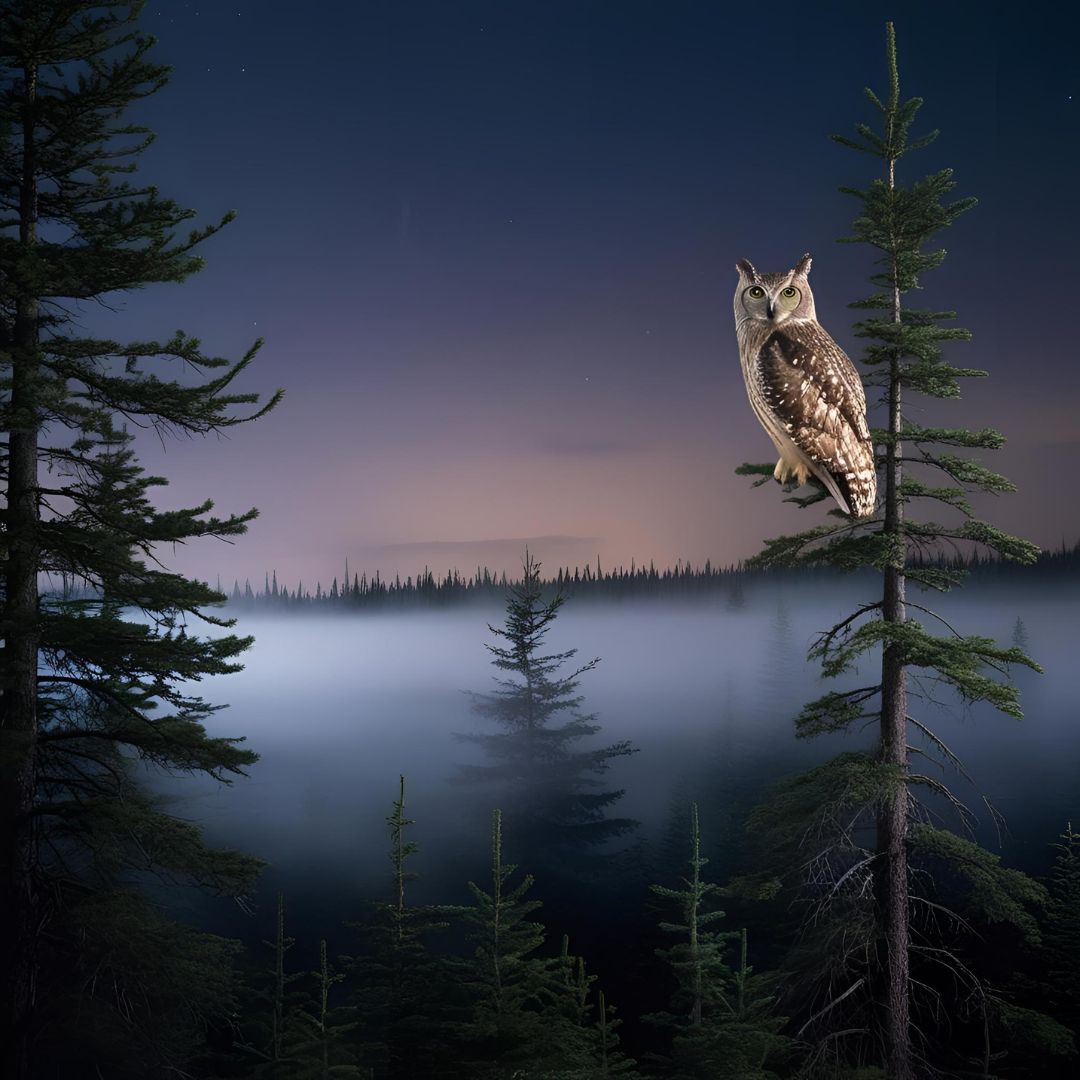Boreal forests, also known as taigas, stretch across vast regions of the Northern Hemisphere and are home to a natural symphony that becomes more intense as night falls. While darkness envelops the tall trees and frozen lakes, a hidden soundscape awakens — subtle, ancient, and deeply revealing. These rare sounds are not only enchanting but also carry scientific, cultural, and spiritual value.
When Silence Speaks: The Nocturnal Life of the Boreal Forest
At first glance, boreal forests seem silent. But with attention — or a sensitive microphone — one can capture an acoustic richness that escapes the untrained human ear. At night, the environment transforms: wind slides through conifers, owls release their solitary calls, small rodents dig under the snow, and predators like wolves and lynxes move with tense silence.
These sounds are more than beautiful — they serve ecological purposes. Territorial calls, danger alerts, mating rituals, or simple nighttime activity form a true acoustic ecosystem.
Sounds That Tell Stories
Every nocturnal sound in the taiga has something to say. The hoot of the long-eared owl, for instance, echoes among the pines as a signal that the territory is claimed. The subtle cracking of branches can indicate the presence of large animals, such as brown bears foraging for food. The distant howl of a wolf may not only mark location for the pack but also prompt a response from another group miles away.
These elements create sound narratives that documentarians, biologists, and even sound therapists are using for various purposes: understanding animal behavior, enhancing audiovisual productions, or inducing meditative states.
The Power of Field Recording in the Boreal Forest
Capturing these sounds requires skill and patience. Field recorders, parabolic microphones, and windshields are essential tools for those aiming to faithfully document the forest’s nighttime acoustics. In places like Canada, Alaska, Finland, and Russia, famous recordings have been made during long, freezing nights where absolute silence is broken by brief but meaningful sounds.
Many of these recordings are now used in documentaries by BBC, National Geographic, and Arte, lending realism and sensory depth to visual content. In addition, sound artists create entire works based on recordings from the boreal wilderness.
Applications in Meditation and Relaxation
There’s growing interest in using natural sounds to promote relaxation and well-being. Nighttime sounds from boreal forests stand out for their softness and depth. With no human noise, these recordings offer an immersive and grounding experience, useful in practices like mindfulness, yoga, guided meditation, and even sleep aid.
The consistency of wind through the trees, the rhythm of nocturnal animals, and the absence of urban noise create a sense of primitive peace, as if the listener were transported to a world untouched by time.
A Window into Biodiversity
Beyond their artistic and therapeutic value, these sounds are a powerful tool for environmental monitoring. Researchers analyze soundscapes to identify endangered species, track migrations, measure climate change impacts, and assess ecosystem health.
In a world where natural habitats are under constant threat, each recording becomes a valuable archive — sometimes the only acoustic record of a little-studied species. Sounds that once went unnoticed are now scientific documents.
Invisible Stories Brought to Life
What’s most fascinating about the nighttime sounds of boreal forests is how they reveal what the eyes cannot see. A simple scratching noise may indicate an animal marking territory. The rhythm of footsteps in snow reveals size, weight, and even emotional state. In documentaries, these sounds enrich the narrative, creating tension, mystery, or awe — even when the screen is dark.
For the audience, listening to the forest means stepping into another dimension of reality. It shows that life continues after the light goes out — that stories are unfolding in silence, and sound is their language.
Preserve the Sound to Protect the Future
The advance of cities, roads, and industrial exploitation is compromising the natural silence of boreal forests. So-called “noise pollution” is even threatening the communication and survival habits of various species. That’s why recording and preserving the nocturnal sounds of these regions is also an act of environmental conservation.
Worldwide initiatives are building sound libraries of natural landscapes before they disappear. Listening to these archives is also a reminder: if we fail to protect the forests, we’ll lose not just biodiversity — but their sonic stories too.





